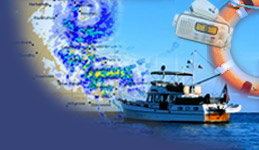Prepare Vessel for refuelling or Fuel Transfer Operation | Complete refuelling Operations
|
   |
 |
Commence Refuelling
To commence refuelling, undertake the following steps:
- remove the cap to the refuelling inlet
- place the nozzle in a secure position in the refuelling inlet
- ease the trigger to commence refuelling
- ensure that you are positioned effectively to avoid unnecessary strain on your body
|
Monitor Fuel Tank Levels
Larger commercial vessels will have a number of fuel tanks, generally located on opposite sides of the vessel. If filling multiple tanks, ensure that you fill only a portion at a time to maintain the stability of the vessel. Tanks should only be filled to 90% capacity to allow for expansion and to prevent spillage.
Use your mouse to click on the video screen below to watch a movie demonstrating the refuelling of a rescue vessel.
Then, scroll down the page to continue on with the refuelling of a commercial vessel.
|
|
|
|
Use your mouse to click on the video screen below to watch a movie demonstrating the refuelling of a commercial fishing vessel.
Then, scroll down the page to continue on with Mobile Refuelling.
|
|
|
| |
Mobile Refuelling |
 |
When refuelling a vessel from a mobile fuel truck, you will be able to communicate with the driver throughout the refuelling process to ascertain the volume of fuel which has been dispensed.
You should also watch the fuel tank vents and when air is released out of the vents you should ease off the trigger and cease refuelling. |
| |
|
After Refuelling
Once you have finished refuelling you should ensure that each of the following tasks has been completed.
- Remove the filter hose and drain all residual fuel into the tank
- Reseal the refuelling entry point
- Thoroughly clean up all surface spills with an absorbent cloth
- Be aware that traces of fumes may remain in the lower extremities of vessel. Ventilate the area as required. If fuel has spilt into the bilges, pump the bilges manually into sealed containers or pump ashore and leave boat wide open for at least 30 minutes to vent.
- Take down communication signals, no smoking and warning signs
- Communicate to local authorities and/or other vessel that refuelling has ceased
- Record information in vessels documentation
|
 |




